French Bulldog - Personality Traits and Breed Information
The French Bulldog is a popular breed because of their friendly and charming nature. They enjoy indoor play and snoozing, which makes them adapt well to apartment living, not to mention their openness to children, strangers, and other dogs. This breed is the epitome of a well-socialized canine.
Are you planning on owning a French Bulldog? Or do you already have one? If the latter, you probably already know that you have a goofy, adorable, and affectionate dog. If you are still thinking about it, reading this might help you decide. Either way, this article is recommended for you.

History and Origin of French Bulldog
As the breed’s name implies, the French Bulldog was developed in France. The breed originated from England and first appeared in the city of Paris as a result of cross-breeding of English toy bulldogs and local terrier breeds. Although its progenitors are bred for bull-baiting and pit-fighting, the French Bulldog was bred to be a companion dog. It was famous among lace makers in the French countryside and was known as Bouledogue Français. By the end of the 19th century, the French Bulldog became popular across Europe and America.
French Bulldog Breed Information
About the Breed
The French Bulldog is a small to medium-sized bully breed characterized by its square face, short snout, compact build, and bat-like ears. This dog has a smooth coat and a muscular, heavy bone structure. Weighing only less than 28 pounds, it also has a variety of coat colors, such as brindle, cream, and fawn. The temperament of this breed is playful, curious, and affectionate. They love spending time with the family, other dogs, and even young children. They are also low-maintenance pets when it comes to exercise and grooming. The French Bulldog usually only requires monthly grooming and short periods of walking and playing outside to keep them clean and fit.

Factors to Consider when Choosing a Dog for an Apartment
There are several factors to consider when choosing a dog for an apartment.
Size of the dog
Small to medium-sized dogs are recommended for apartment living. Larger dogs usually need more space and a backyard to run around.
The temperament of the dog
Dogs who are calm and quiet with a low-energy temperament are best suited for an apartment. Vocal dogs do not sit well with their neighbors.
The sociability
Dogs who are easier to socialize with other dogs and people are recommended when living in an apartment. This is because apartments are usually densely populated by people and pets. Learn more how to socialize a puppy.
Trainability
Dogs who are owner-pleasers are easier to train. Moreover, a well-trained dog is a behaved dog that landlords would prefer for their apartments. Learn more how to train a French Bulldog.
Activity requirements of the dog
Dogs who require little exercise are best suited for apartments. These dogs can thrive on short walks and mostly indoor activities and exercise.

French Bulldog Temperament and Personality
French Bulldogs are playful, curious and affectionate. They love socialization, whether it be with humans or other animals. They may become destructive because of their playful and curious nature, so they may require training and plenty of toys to keep them busy. As they are alert and intelligent dogs, they will benefit from proper training and other mental activities.

Are French Bulldogs Good With Other Dogs?
French Bulldogs are very good with other dogs. They have a natural predisposition to friendliness, and are one of the most sociable canines. Because of this, they are unlikely to show aggression when introduced to new dogs.
Are French Bulldogs Good Family Dogs?
In general, French Bulldogs prefer their human companions over other dogs. They are a family-oriented breed, and tend to be affectionate most of the time. They also enjoy spending time with children. They become elated when they spend plenty of time with the family. However, they are also prone to separation anxiety when left alone for long periods of time.

Are French Bulldogs Smart?
French Bulldogs may have been underestimated for years in terms of intelligence. This breed is ranked 109 out of 138 based on Coren Stanley's “The Intelligence of Dogs”. Those familiar with the breed would argue that French Bulldogs have innate stubbornness, which results in their poor performance in tests. Many factors are not taken into account, such as their excellent adaptive and social intelligence. It is, therefore, right to say that French Bulldogs are smart in their own way

Is it hard to train a French Bulldog?
French Bulldogs are not the easiest dog breeds to train, but almost. According to the AKC, this breed rates at a four out of five in their trainability. They are well-driven by treats and vocal rewards. By starting early in life, French Bulldogs can definitely be well-mannered and obedient.

Can French Bulldogs Swim?
French Bulldogs are one of those dogs who cannot swim due to their bulky body. Therefore, they must always be supervised when venturing near pools or bodies of water. They also cannot tolerate abrupt changes in temperature and humidity. For instance, extreme heat may lead to heat stroke because they cannot respirate well. On the other hand, extreme cold would also negatively affect them due to their single short coat. Flying may not be an option for this breed. In general, brachycephalic breeds are not encouraged to ride an airplane.
French Bulldogs Personality
French Bulldogs are calm by nature. Additionally, these dogs rarely bark. Most of the time, they only bark to alert their owners. This is one of the distinguishing personality traits of this breed. They are also independent, which may be one of the reasons why some owners find it difficult to train their Frenchies. But with proper techniques and consistency, French Bulldogs are very trainable.

French Bulldog Health and Care
The French Bulldog belongs to the group known as brachycephalic breeds. Brachy means shortened, while cephalic means head: thus, shortened head. Because of their head conformation, they are predisposed to a variety of health conditions. Their other conditions are attributed to their skin and body conformation.
French Bulldog Common Health Issues
Here are the most common health issues encountered with French bulldogs. Remember that catching and treating these issues early on is important.
Breathing disorders
Due to their short snout, French bulldogs have a variety of conditions that restrict efficient breathing. The most common breathing disorders in this breed are stenotic nares, tracheal collapse and BOAS.
Stenotic Nares
Stenotic nares is a common congenital condition of brachycephalic breeds including French bulldogs. The medical terms stenotic and nares means constricted and nostrils, respectively. This means that dogs suffering from stenotic nares have a narrowed passageway for air coming in and out. The inefficient respiration caused by this condition may manifest as noisy breathing, open-mouth breathing and snoring. Additionally, wheezing, gagging, coughing and exercise intolerance may also be caused by stenotic nares.
Stenotic nares can be diagnosed through physical examination. The veterinarian will further grade the stenosis from mild, moderate to severe. It is also important to rule out BOAS in dogs with stenotic nares. If you have a French bulldog, you can look at your dog’s nostrils closely and compare it to the image provided below.
Surgery is currently the only treatment for stenotic nares. The procedure is called rhinoplasty. The goal of the surgery is to widen the air passageway by removing portions of the nostrils.

The normal conformation of a dog’s nostrils.

This French Bulldog’s nostrils are very narrow making breathing difficult.
Tracheal Collapse
Tracheal collapse happens when the cartilage rings along the tracheal wall lose their strength and rigidity. The weakened structure of the trachea makes it difficult for air to get to the lungs. This is why dogs suffering from tracheal collapse have difficulty breathing. Moreover, this is a progressive disease which means that the cartilages weaken more over time.
The most outward symptom of tracheal collapse is a persistent, dry, harsh cough. The cough may also be more observed with excitement, with neck collars, or after eating and drinking. Environmental factors like hot and humid weather, and/or nighttime also worsen coughing.
Tracheal collapse is diagnosed and confirmed by performing radiography, fluoroscopy and bronchoscopy. It can be treated through medications, surgery or both depending on the severity of the case. Maintaining a healthy weight is also important to prevent disease exacerbation.

Credit: VCA Hospitals
Brachycephalic Obstructive Airway Syndrome (BOAS)
BOAS is a serious respiratory disorder of brachycephalic breeds. This refers to a particular set of upper airway abnormalities. The basic components of BOAS include the following.
- Stenotic nares - constriction of the nostrils
- Elongated soft palate - results to partial blockage of the trachea
- Hypoplastic trachea - trachea with a smaller diameter than usual
There are other abnormalities that can be present aside from the above. The more the issues, the more severe the case is. Other abnormalities that could be seen in BOAS include the following.
- Extended nasopharyngeal turbinates - ridges of bone and tissue in the nose that may extend to the throat
- Laryngeal collapse - weakening of the cartilages of the larynx
- Everted laryngeal saccules - pouches located in the larynx that have turned inside out
- Macroglossia - oversized tongue
Clinical signs and symptoms of BOAS include labored and noisy breathing, open-mouth breathing, and snoring. Affected dogs may also have exercise intolerance, coughing, gagging, and vomiting. Severely affected dogs may have episodes of fainting. In general, these symptoms are more frequently observed during hot and humid weather. Dogs with BOAS are at a very high risk for heat stroke.
BOAS is tentatively diagnosed based on clinical signs and results of a physical examination. This is further confirmed through examination of the respiratory tract under general anesthesia. If confirmed, surgical correction may be done along the process.
In dogs with the mild form of the disorder, medical treatment is preferred. Managing weight, avoiding hot conditions and preventing stress are important. In dogs with the severe form of BOAS, surgical management is the treatment of choice.

Credit: Lynbrook Vet
Anesthesia Sensitivity
Anesthesia of French bulldogs carries increased risk of airway obstruction due to their flat skull. Moreover, the increased vagal tone in this breed may also predispose them to bradycardia, or slow heart rate, when anesthetized. Other problems like regurgitation and gastroesophageal reflux during anesthesia may lead to aspiration pneumonia. Due to these risks, there are certain protocols practiced when inducing anesthesia in brachycephalic breeds.
Eye disorders
French bulldogs are also prone to several eye disorders. Left untreated, these conditions may lead to infections and vision loss. These include cherry eye, juvenile cataracts and entropion.
Cherry Eye
Cherry eye is a condition where a tear-producing gland inside the eye protrudes. It appears like a “cherry pit”, thus the name. Medically known as prolapse of the third eyelid gland, this condition is irritating and may cause dry eye in dogs.
A smooth, round, red or pink mass in the inner corner of the eye is suggestive of the disorder. It may come and go in mild forms of the disease. It may also present in both eyes. Affected dogs may have excessive eye secretions. They may also try to paw their eyes.
An eye examination by a veterinarian is enough to determine the disorder. Surgery is the treatment of choice. Different surgical approaches are available but it is highly recommended that the third eyelid gland be preserved if possible. Total removal of the prolapsed gland itself will result in chronic dry eye.
Early Onset Hereditary Cataract (EHC)
Cataracts are opacities in the eye caused by structural changes in lens proteins. EHC, also known as juvenile cataract, is a hereditary eye disorder of French bulldogs. This type of cataract usually develops within their first year of life. The cataract is also bilateral, symmetrical and progressive.
Symptoms of EHC depend on severity. Dogs with the mild form of this condition may only have squinting and eye scratching. In more serious cases, white opacities are visible in the middle of the pupil. Dogs suffering from complete cataract have vision loss and may bump into things.
A veterinarian will diagnose EHC through a complete ophthalmic examination. Minor cases will not need immediate surgery and will be managed through medications. In severe cases, a veterinary ophthalmologist can surgically remove cataracts to restore vision
Entropion
Entropion is an eye abnormality wherein the eyelid rolls inward. This results in continuous rubbing of the eyelashes on the cornea of the eye. Eye irritation, corneal ulcers and ocular hyperpigmentation may occur secondary to entropion.
Dogs with entropion usually squint or hold their eyes shut. They also have excessive formation of tears which may sometimes be accompanied by a mucoid discharge. Most of the time, both eyes are affected.
A veterinarian will diagnose entropion through an eye examination. This abnormality is usually diagnosed in puppies less than one year of age. The only treatment is surgery where a section of skin is removed from the affected eyelid to reverse its inward rolling. In severe cases, a series of surgeries may be necessary.
Skin issues
French bulldogs suffer from a variety of skin conditions. This breed will experience at least one of these skin conditions throughout their lifetime. The most common skin issues of French bulldogs are allergies, autoimmune skin disorders, and skin fold dermatitis.
Allergies
Allergies happen when the dog’s immune system overreacts to a particular substance. This substance is called an allergen: usually proteins from plants, insects, animals, or foods. Allergies have a variety of symptoms which are as follows.
- Itchiness
- Hives
- Swelling of the face, ears, lips, eyelids, or earflaps
- Red, inflamed skin
- Diarrhea
- Vomiting
- Sneezing
- Itchy ears
- Chronic ear infections
- Itchy, runny eyes
- Constant licking
Sometimes, a sudden onset of these symptoms after your dog does something for the first time is suggestive. This may include starting a new food, using a new shampoo, taking medication, having vaccinations, or having a stroll in the grass. However, it is best to always have your dog checked by a veterinarian if these signs show. A full diagnostic evaluation is usually done to rule out other causes from these symptoms. If an allergy is diagnosed, medications such as antihistamines are given. It is best that you know the allergens that trigger your dog’s allergies to have a better preventive plan.

Typical manifestations of an allergic reaction in a French Bulldog.
Autoimmune Skin Disorders
Autoimmune skin disorders are conditions wherein the immune system attacks the dog’s otherwise healthy skin tissues. It is believed that genetics play an important role in the occurrence of these disorders. The most commonly reported autoimmune skin disorders are pemphigus complex, bullous pemphigoid, systemic lupus erythematosus, and discoid lupus erythematosus.
Blisters and scabs around the eyes, ears, footpads, groin and bridge of the nose that are not responsive to antimicrobial treatments may be symptoms of autoimmune skin disorders. Other remarkable signs are lumps, chronic skin redness and loss of pigmentation (especially on the nose). In systemic lupus erythematosus, a butterfly lesion over the bridge of the nose is seen.
Biopsy of the affected skin will diagnose autoimmune skin disorders. The goal of the treatment is to suppress the immune system of the affected dog. Usually, treatment with prednisone or dexamethasone will be sufficient after treating secondary infections.
Skin Fold Dermatitis
Skin fold dermatitis occurs when an infection forms in a pocket between two folds of skin. Since French bulldogs have a lot of facial folds, they are prone to having this condition. Being overweight also heightens the risk of having this issue.
Reddish, itchy and smelly skin particularly on the folds are signs of this type of dermatitis. The offensive odor may not go away even after bathing. The folds may also have sticky and yellowish discharge which may be painful when cleaned.
A veterinarian can easily diagnose this issue upon physical examination. Further testing, such as a skin cytology, may be done to determine the specific type of infection. Treatment includes oral and topical medications. It is also recommended to clean and dry your French bulldog’s skin folds regularly while maintaining a healthy weight.
Musculoskeletal Disorders
The short and bulky stature of French bulldogs predisposes them to several musculoskeletal disorders. These conditions greatly affect the quality of life if not properly managed. The common musculoskeletal disorders of French bulldogs include IVDD, hip dysplasia, and luxating patella.
Intervertebral Disc Disease (IVDD)
Intervertebral disc disease is a serious condition where one or more discs in the spinal cord become compressed. It happens when the discs degenerate and either protrude or rupture due to calcification. This condition causes nerve and spinal pain to the dog.
Pain is the outward symptom of IVDD. Affected dogs may arch their back, tremble, yelp, and limp. The pain from IVDD will result in difficulty getting up or laying down, walking up or down stairs, and getting up onto furniture. In severe cases, affected dogs might not be able to walk, and lose control of urination, bowel movements, and conscious proprioception.
A veterinarian will be able to diagnose IVDD through a physical and neurological examination and imaging (e.g. x-ray, MRI). In affected dogs with mild symptoms, medical management may be done initially. Dogs with more serious cases or those who are unresponsive to medical management may need surgery. This is known as surgical decompression.

Hip Dysplasia
Hip dysplasia occurs when the hip bone and its cartilage start to degenerate. This will result in pain and mobility problems as it progresses. Hip dysplasia may also worsen with being overweight and having excessive exercise.
Weakness and pain in the hind legs are the usual clinical signs of hip dysplasia. Other symptoms that you could look out for are lameness, limping, noisy joints, bunny hopping, and struggling to stay upright.
Your veterinarian may order a hip radiograph under general anesthetic to diagnose hip dysplasia. In mild cases of hip dysplasia, a variety of medications may be opted. Affected dogs are also required to take veterinary-approved joint supplements. Physical rehabilitation and weight management are also important. In severe cases of this disorder, surgical treatment such as total hip replacement or femoral head/neck ostectomy (FHNO) is necessary.
Luxating Patella
Luxating patella is a condition wherein the kneecaps of the dog dislocate. It also predisposes the knee to other injuries such as arthritis and torn ligaments. This disorder is known to be a hereditary disease of French bulldogs.
A common symptom of a luxating patella is a sudden limp. During this, a dog will hold their hindlimb off the ground for a short period of time before walking normally again. Affected dogs may also skip in their step or run on three legs.
Patellar luxation is diagnosed based on palpation of an unstable kneecap during a veterinary orthopedic examination. In mild forms of the disorder, treatment is not necessary as long as there are no other conditions (e.g. arthritis). Persistent lameness from a luxating patella may indicate surgical correction.

French Bulldog Adoption Tips
Adopting any dog is a long-term commitment. You must physically, mentally, and financially prepare yourself for the dog’s welfare and quality of life. Here are some tips on adopting if you finally decide to own a French Bulldog.
Find a reputable French Bulldog breeder.
A responsible breeder screens his stocks for conditions that can affect the breed. The breed’s tendency to develop their predisposing diseases later in life is influenced by heredity. It simply means that healthy dams and sires will more likely produce healthy baby Frenchies.
Invest in a pre-purchase veterinary examination.
It should be non-negotiable between you and the breeder. The examination is necessary because only a veterinarian can conclude if the puppy is healthy. During this, a complete physical examination, basic screening tests and wellness services may be done. This is also the time to ask which supplements and diet are best for your French Bulldog.
Have everything ready upon adoption.
It is crucial to prepare your home before the arrival of your French Bulldog puppy. Restrict his access by placing dog fences or playpens beforehand. You should have already purchased food and water bowls, a crate, a collar with a leash, a dog bed, pee pads, potty trainers, and more. Talk to your breeder about your puppy’s routines and needs to make his acclimation less stressful.
Consider adopting a Frenchie from rescue organizations.
Start by visiting your local animal shelter. Most rescued dogs from shelters are abandoned by their owners. Despite this, they are mostly well taken care of as they have in-house veterinarians to treat them. There is nothing more beautiful than these precious animals getting a second chance in life.
Consider comprehensive pet insurance.
This recent concept of insuring your dogs is actually very useful. French Bulldogs are expected to require more veterinary visits than the average dog.
Grooming and Nail Care
How often do French Bulldogs need to be groomed?
In general, French Bulldogs will only need full grooming services once a month. Their coat only sheds minimally so weekly brushing is enough to keep their coat smooth and shiny. Brushing will also help improve blood flow in the skin, thus, will promote new hair growth. Make sure to use a gentle medium-bristle brush, a rubber grooming mitt or tool, or a hound glove.

Skin folds along the face must always be kept clean and dry. You can use hypoallergenic, unscented wipes to clean the facial folds then pat dry them with a clean cloth. The same is applicable for the ears and paws. By doing these, itching and nasty infections are prevented.
How often should you cut Bulldogs nails?
For mostly indoor Frenchies, nail trimming should be done every 1-2 weeks. For dogs spending a significant amount of time walking and playing outside, the nails can be trimmed every 3-4 weeks. The nails must always be kept short. As a rule of thumb, nails clacking on the floor means a nail trim is needed. You can use nail clippers or nail grinders to trim your French Bulldog’s nails.

Exercise Needs
As a general rule, adult French Bulldogs need only 60 minutes of physical activity in a day to be physically fit and healthy. Half of this can be spent on daily walks, preferably one to three times a day, during its coolest hours. The other half can be spent on physical activities indoors. They may also benefit from sporting activities such as obedience and agility training. It is important to never overexert your French Bulldog as they can suffer from breathing difficulties.

French Bulldog Size and Coat Color
Size
The French Bulldog is a small to medium-sized breed. Based on AKC standards, French Bulldogs weigh less than 28 pounds. Most female French Bulldogs will weigh between 17 to 24 pounds. Male French Bulldogs weigh about 20 to 28 pounds. The average height of this dog breed ranges from 11 to 13 inches for both males and females.

French Bulldogs will reach their full height when they are between nine and twelve months old. As for the weight, most of them will be close to their full weight at around eight months old. They could gain a couple of pounds at most as they reach their first year of age.
With regard to growth, one important clue that you could look for is the size of their paws. Oversized paws next to their legs and body means that your French Bulldog is still growing. You may also ask your breeder his estimated optimal weight and height to have an idea.
Coat color
This is the list of different coat colors of French Bulldogs. The coat colors are further elaborated based on their description and rarity as well as their recognition by the AKC.












Nearly all purebred Frenchies will have a short, smooth, single-layer coat type. This coat type is easy to maintain and will only need weekly brushing and bathing. However, there are less common coat types French Bulldogs can have. Therefore, you must know which type of coat your Frenchie has. Here is a list of the different types of coats of French Bulldogs.




French Bulldog Breed Organizations
Whether you are contemplating on having a French Bulldog or you already have one, it’s best to do your research. Here is a list for you to check out.
- French Bull Dog Club of America (FBDCA)
- French Bulldog Rescue Network (FBRN)
- The French Bulldog Encyclopedia
- Royal Empire French Bulldogs
- Frenchietopia
Conclusion
The French Bulldog is a friendly, calm, affectionate and quiet breed perfect for a family dog. This breed is well-suited for apartment living and will require less grooming and exercise than most dogs. With proper training early in life, this adequately intelligent breed will grow into a well-mannered and obedient pet.
Responsible ownership is a must when owning any animal. With French Bulldogs, one of the most important aspects to consider is their health. By researching and talking with your veterinarian, you can ensure your French Bulldog will have a long and healthy life.
Do you have a French Bulldog? Share your experience with this breed by leaving us a comment below.
Recently, Bully Max has launched dog food specifically formulated for small breed dogs. It is an ideal option for French Bulldogs, tailored to cater their health and wellness needs. Our top-quality formula is rich in healthy protein sourced from real chicken meal, and contains crucial vitamins and minerals to give your furry friend a completely balanced and nutritious diet.

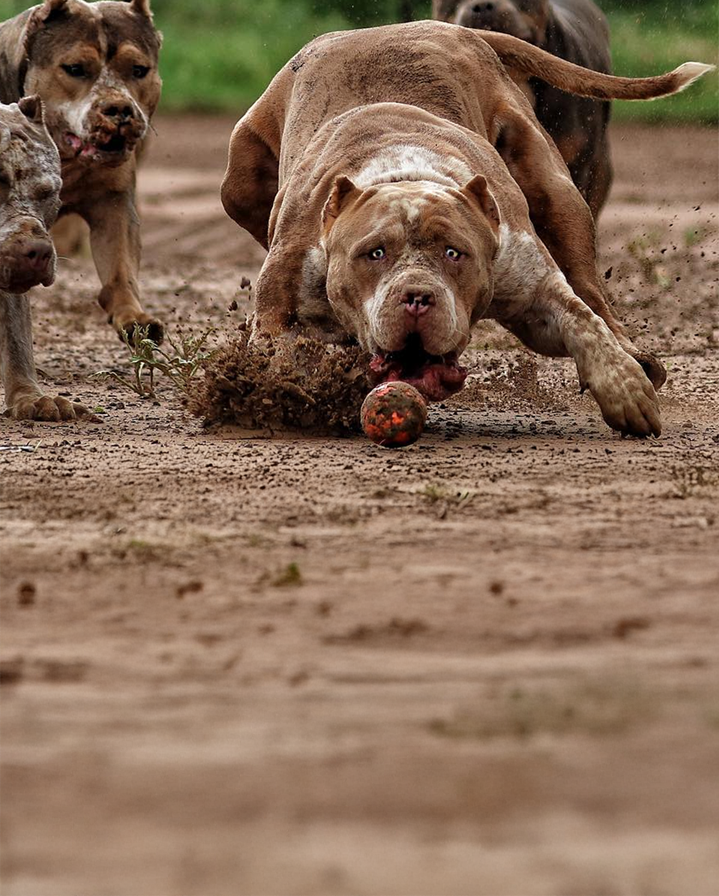
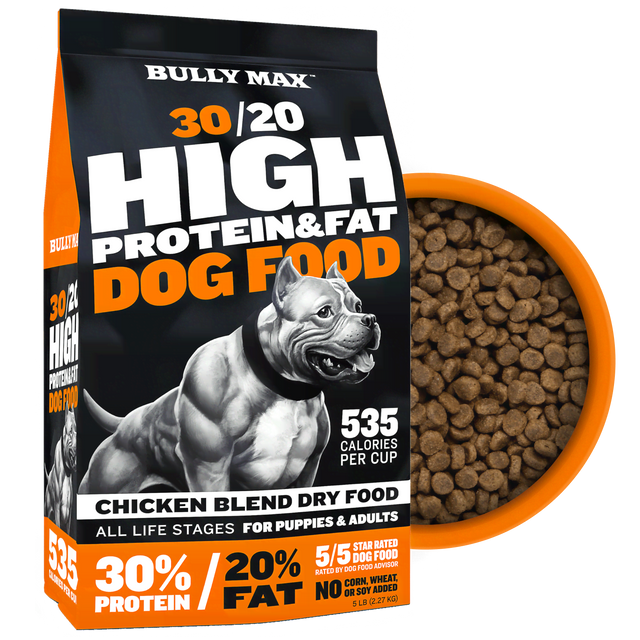
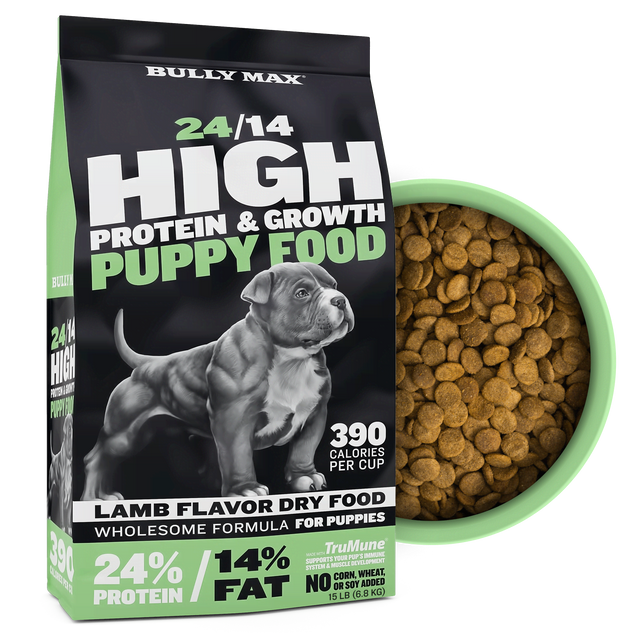
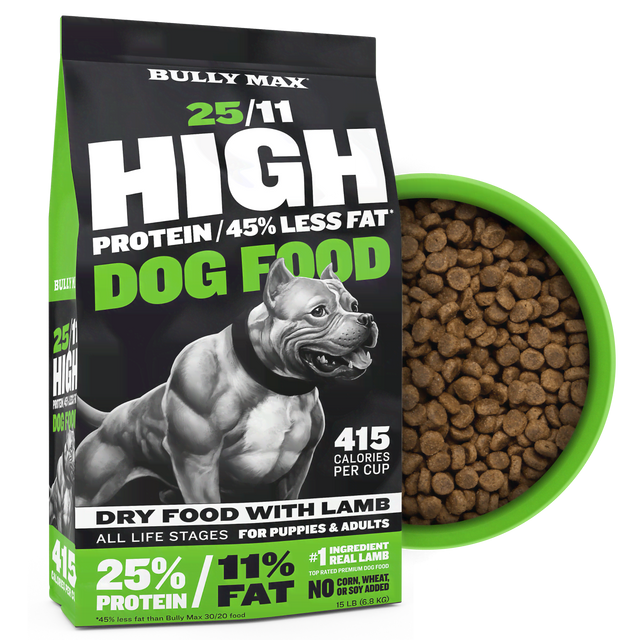
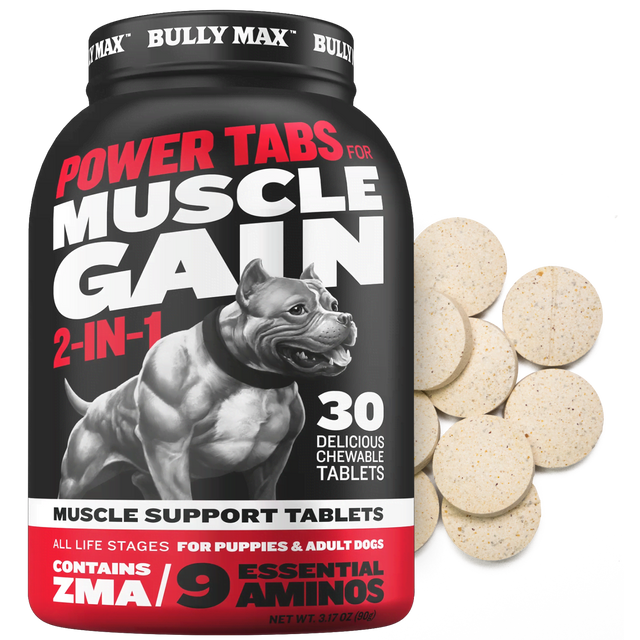




1 comment
This article is incredibly helpful.
I initially read it to learn more about the temperament of French Bulldogs, and I found it very engaging. I read it all the way through.
I agree that French Bulldogs are intelligent in their own unique way. However, it is unfortunate that they have breathing problems. It is always heartbreaking to hear about how difficult it is for them to breathe at times. They sound like little pigs, haha.